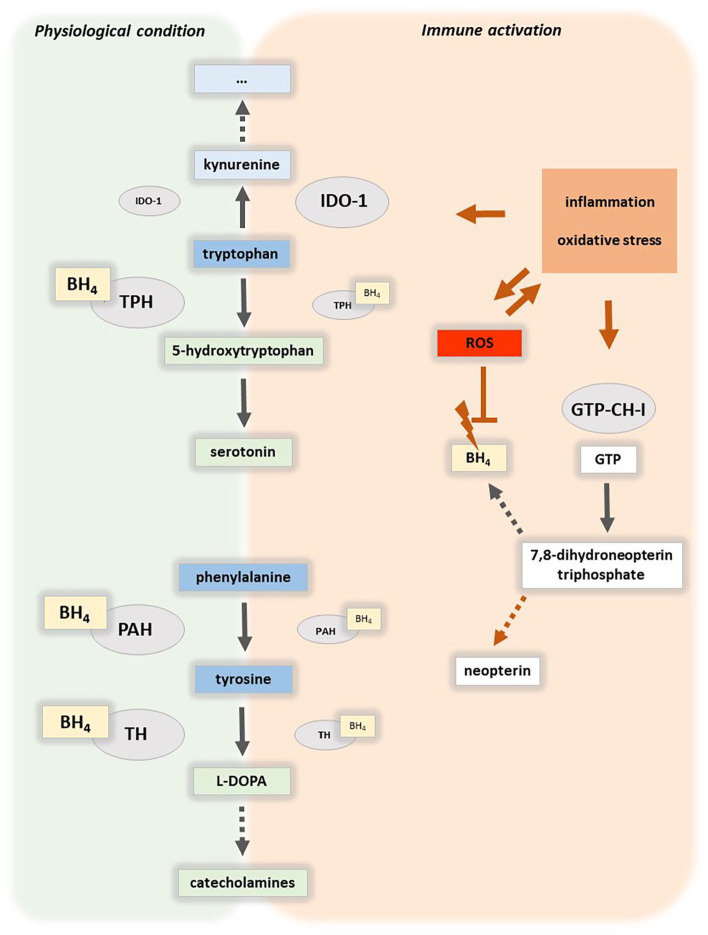Figure 1.
Aromatic amino acid catabolism and related pathways. Immune activation is characterized by an oxidative milieu and release of inflammatory stimuli that for example during the cellular immune response activate indoleamine 2,3-dioxygenase (IDO-1), which catalyzes the rate-limiting reaction in the tryptophan catabolic route along the kynurenine axis. Notably, also tryptophan 2,3-dioxygenase and IDO-2 can catalyze tryptophan breakdown (not shown). GTP-cyclohydrolase 1 (GTP-CH-I) forms 7,8 trihydroneopterin triphosphate, the precursor of tetrahydrobiopterin (BH4), and neopterin. In immune activation, this biosynthetic route is shifted towards neopterin formation in human macrophages and dendritic cells, moreover, the oxidative milieu destabilizes BH4. In consequence, the activity of BH4-dependent monooxygenases such as of tryptophan 5-hydroxylases (TPH), phenylalanine 4-hydroxylase (PAH), and tyrosine 3-monooxygenase (TH) decreases, indicated by smaller symbols. Both, aromatic amino acid availability and the activity of biosynthetic enzymes are determinants of serotonergic and dopaminergic neurotransmitter levels.
Abbreviation: ROS: reactive oxygen species.

